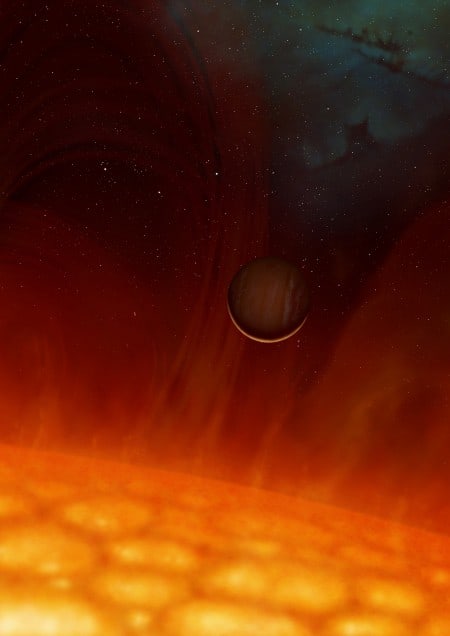In about five billion years the Sun will run out of hydrogen fuel and swell into a red giant star over a thousand times its current volume before shrinking back into a white dwarf. No-one is quite sure whether Earth is close enough to be swallowed up by a bulging Sun or whether it can avoid a fiery death. But now an international team has spotted a planet in a distant solar system that appears to have survived its star’s red-giant phase, even though its original orbit would have been similar to Earth’s (Nature 449 189).

When the Sun becomes a red giant it will steadily lose mass and affect the orbits of the planets, making it hard to predict what will happen to them. Scientists think it is likely that Mercury and Venus will evaporate as the Sun’s surface expands outwards, but the fate of Earth is less certain.
A study by Roberto Silvotti from the Astronomical Observatory of Capodimonte in Naples, Italy and colleagues from Europe, the US, Israel and Taiwan suggests that planets orbiting close to a star — within twice the distance from the Sun to Earth, or 2 AU — can survive the red-giant phase. They have analysed observations of V 391 Pegasi, a star that ceased to be a red giant some 100 million years ago when, unusually, it blew away its outer “envelope” of remaining hydrogen. In its current form as a rare “B-type subdwarf” V 391 Pegasi pulsates as it fuses helium into carbon in its core.
Over seven years Silvotti and colleagues monitored the maxima of these pulsations, which occur on average every six minutes, by recording the flux of light coming from the star. But they found that every 3.2 years the maxima are shifted five seconds early or late, indicating that the star must be wobbling as a result of the gravitational pull of a low-mass companion with this orbit period. With 97% certainty, they calculated, this companion is a large planet roughly 10 billion years old — the first known to orbit a post-red-giant star.
The current of orbit of the planet lies at 1.7 AU, but the researchers estimate that before the red-giant phase when the star had more mass the orbit would have been closer, probably around 1 AU. Likewise, Earth’s orbit is expected to increase from 1 AU to roughly 1.5 AU when the Sun eventually sheds mass while turning into a red giant.
Despite the similarities, Silvotti says that the discovery does not necessarily mean that Earth will avoid assimilation like the planet orbiting V 391 Pegasi. But he hopes that the discovery will be the first of many that will enable physicists to more accurately forecast Earth’s fate.
Even if Earth does escape, however, humans will have to invest in some effective Sun protection — the researchers think that V 391 Pegasi’s planet has temperatures in the region of 200°C.



